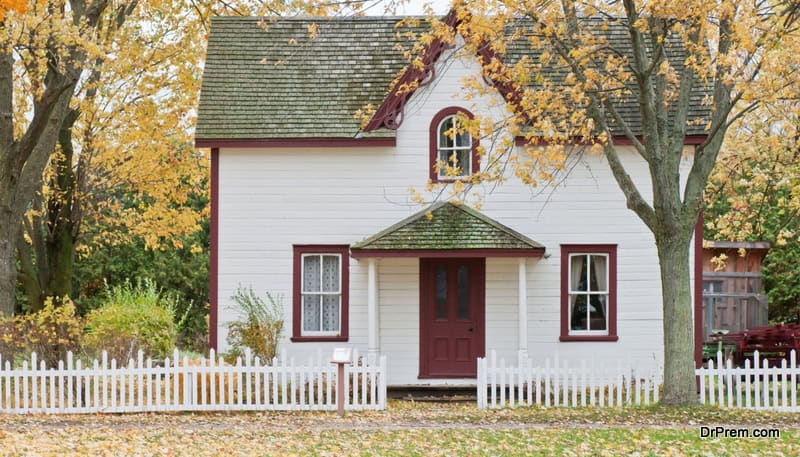Accessory dwelling units (ADUs) are increasingly popular in the USA, even to the extent that some builders creating new residential properties now include an annex to the main home as part of the construction. Once relegated to the realm of occasional guesthouses or backyard studios, ADUs are increasingly common makeovers for existing homes, as well as now being incorporated directly into the blueprint of new homes. The ADU offers a range of benefits for homeowners and their families that can dramatically enhance both value and lifestyle.
The integration of accessory dwelling units into existing properties, and now new residential construction, represents a significant shift in housing trends, reflecting evolving lifestyles and the growing need for flexible living spaces. While the initial costs of incorporating an ADU can be significant, the potential for long-term savings, increased property value, and enhanced quality of life make it an attractive investment for homeowners seeking to extend versatility and financial security in their housing arrangements. As the demand for adaptable, multifunctional homes continues to rise, the family home with an annex may become an common symbol of modern living.
The Rise of ADUs
The increasing popularity of the accessory dwelling stems from both financial considerations and the evolving dynamics of family living. Multigenerational households are increasingly common in the USA, especially as the population ages, and the formerly energetic baby boomers begin to strap on their medical alert smartwatch and other health monitors. Younger generations anxious to care for their elders will often combine households, either moving to the parent’s home or moving parents into their home, or selling both properties and buying or building a more suitable dwelling for multiple generations.
With four out of five aging Americans choosing now to age in place in their existing home, remodeling to accommodate that aging more gracefully is common. Extending the home or turning the back yard into an extra dwelling can easily form part of this work, making a place for a live-in caregiver or younger adults (or giving the main home to the younger and larger family, and moving into the ADU oneself). These moves provide fairly elegant solutions to maintain a degree of privacy and independence for all parties involved.
Younger families also can see the value in an ADU, with the trend towards remote work. A home office that is physically removed from the main living areas offers a focused workspace that can be hard to achieve by using the spare bedroom, for example. For several reasons then, and driven from both ends of the generation spectrum, ADUs offer homeowners the flexibility to designate these annexes as home offices, creative studios, additional accommodations and rental units, optimizing the value of their property.
Costs
The costs of adding an ADU are similar for expanding an existing property and in new construction. The cost of the new building itself is essentially the same in both cases, but ground preparation, connecting utilities and adapting the ADU to the main home are typically more elaborate for existing homes than for new builds, so a custom conversion should be as well planned as any construction project. The remodeling simply to prepare a home for an elder to age in place can range from minimal to extensive, and creating one master plan is ideal here.
Building an ADU from scratch typically involves expenses related to materials, labor, and permits. Retrofitting an ADU into an existing property may also include the cost of modifying the structure to accommodate the new addition. ADUs require connections to essential utilities such as water, electricity, and sewage, and extending these services to the annex from an older structure may take more work than building the home and annex together from the ground up.
Design and architectural fees may be required for an addition to an existing home, even with one of many pre-built options – even with a “cookie-cutter” plan, there are often customizations that you want an architect to make. Newly built homes typically happen in subdivisions with several properties, and these fees are spread across all the properties.
Typically, the better the planning upfront, the more valuable the result over time. And meeting local building codes and zoning regulations is crucial when expanding an existing or new property to include an ADU, and these costs are part of the overall project budget. And finally, while an ADU will typically increase the value of a property, this will also increase the property tax as well, and should be calculated in the plan.
Benefits
Subject to local ordinances, a homeowner may have the option to rent out the ADU, providing a valuable source of supplementary income that can help offset mortgage payments or other household expenses. Even without renting out the space, it can enhance the market value of a property, offering potential rental income for a buyer should the homeowner decide to sell in the future.
In multigenerational households, sharing living costs such as utilities and maintenance expenses between the main home and the ADU can result in overall savings for all residents. And the ability to adapt the use of the ADU to changing circumstances – such as accommodating guests, aging relatives, or evolving family dynamics – can offer a cost-saving flexibility and certainly will offer richer lifestyle possibilities.
Article Submitted By Community Writer




